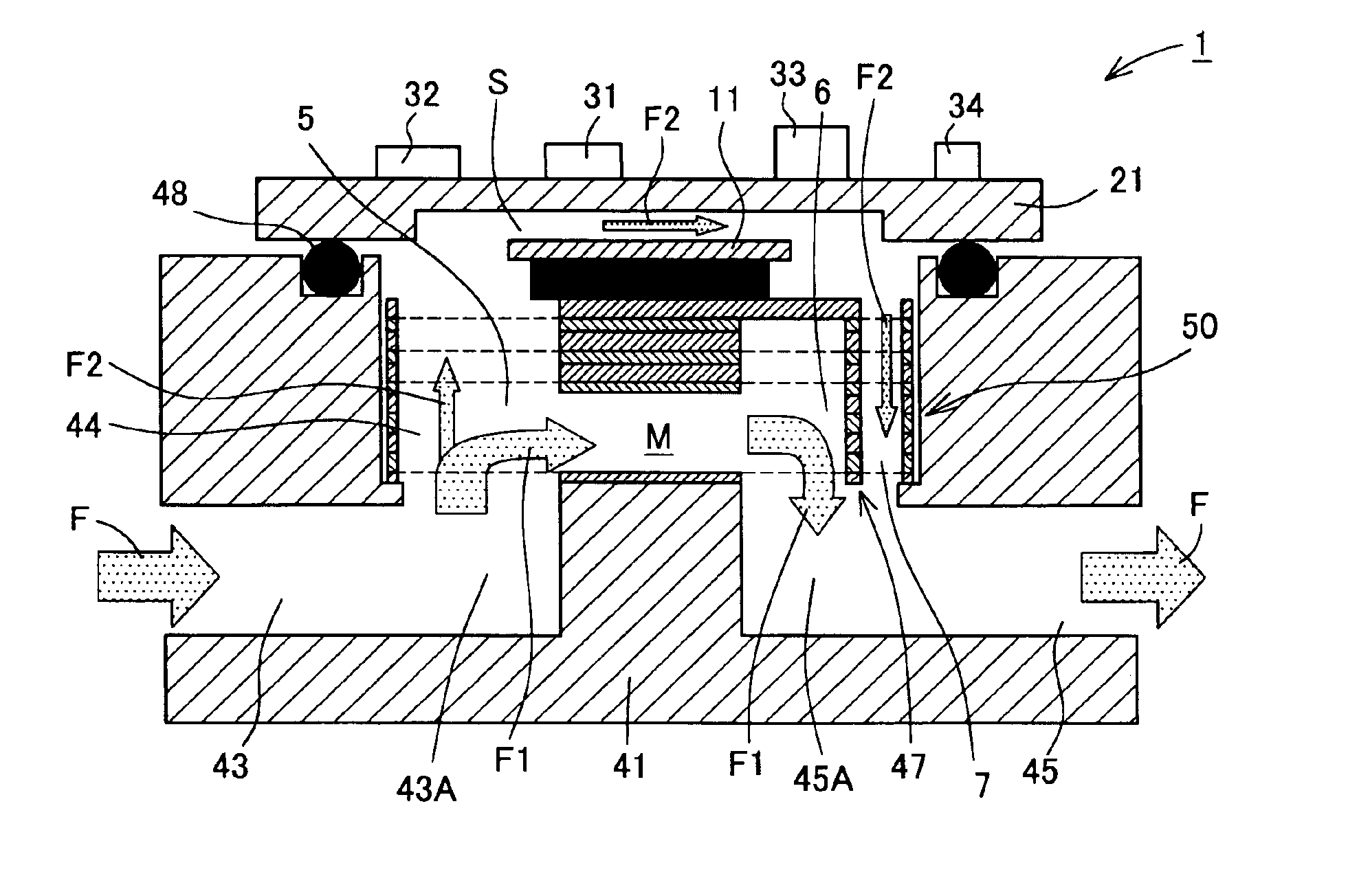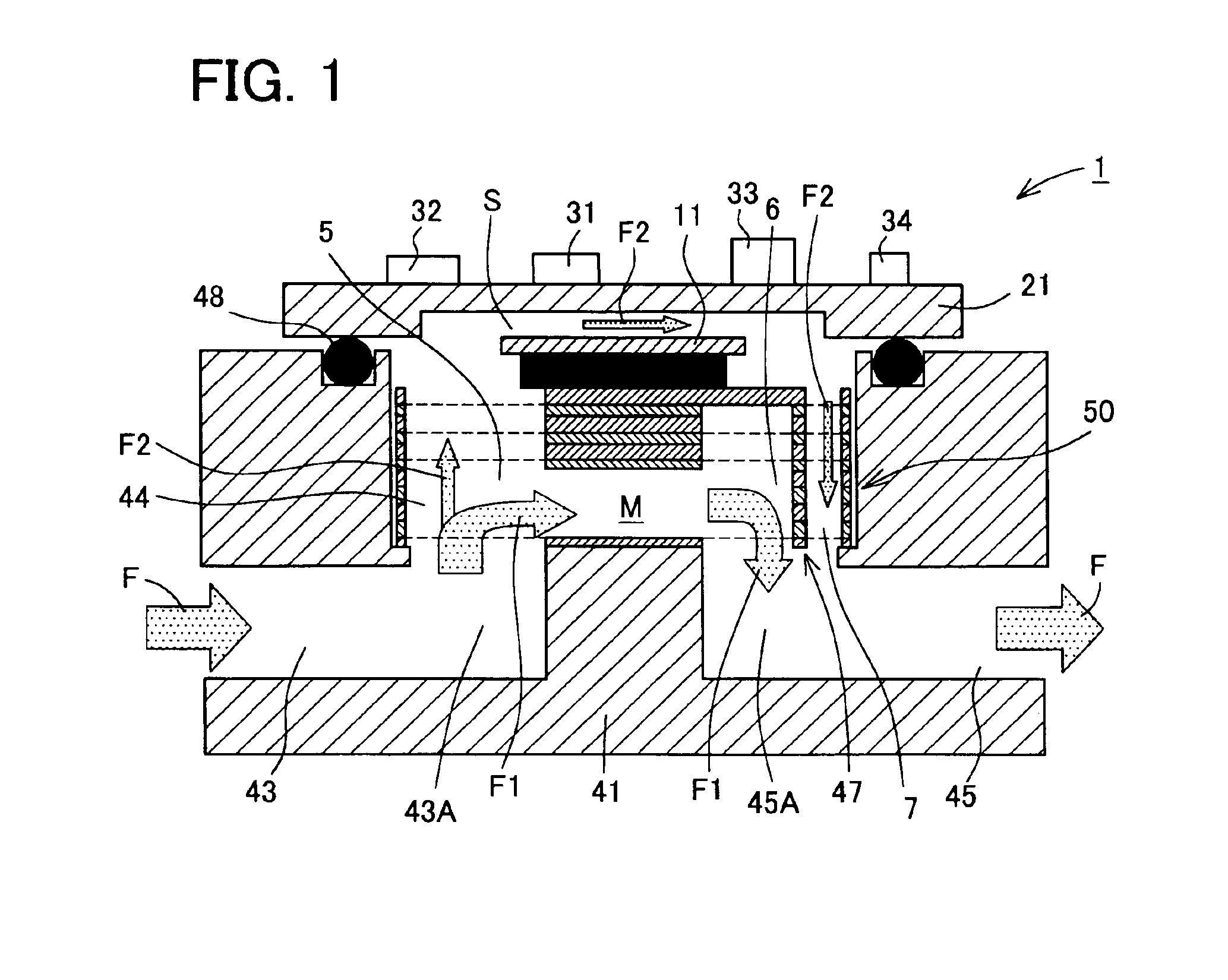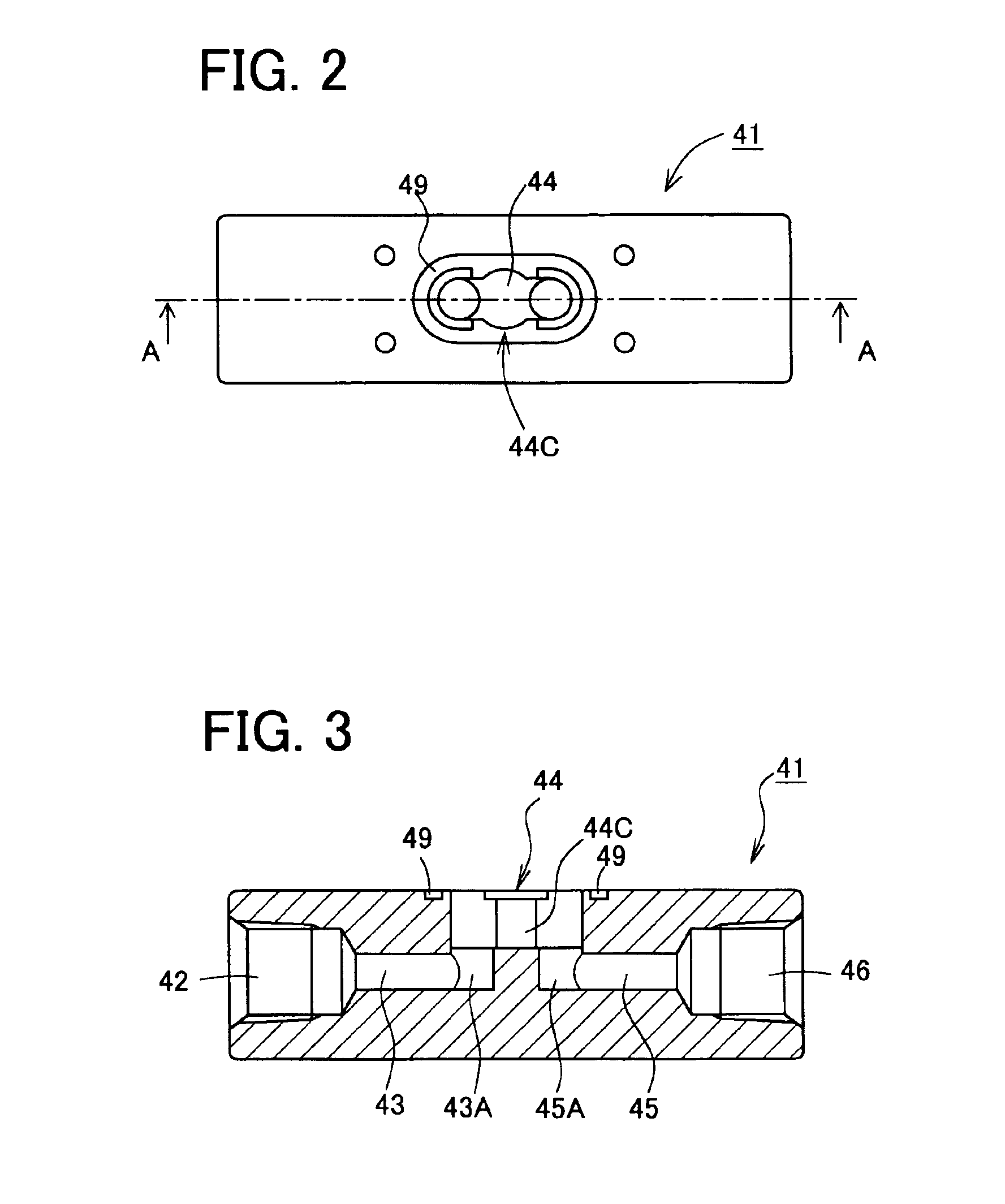Thermal flow sensor having sensor and bypass passages
a technology of thermal flow sensor and bypass passage, which is applied in the direction of volume/mass flow measurement, measurement devices, instruments, etc., can solve the problems of too large thermal flow sensor b>101/b> shown in fig. 23 to be used for checking the suction state, and achieve the effect of stably producing measurement outpu
- Summary
- Abstract
- Description
- Claims
- Application Information
AI Technical Summary
Benefits of technology
Problems solved by technology
Method used
Image
Examples
first embodiment
[0051](First Embodiment)
[0052]At first, the first embodiment is explained. FIG. 1 shows a schematic structure of a thermal flow sensor in the first embodiment. As shown in FIG. 1, the thermal flow sensor 1 in the present embodiment includes a body 41, a sensor board 21, and a laminated filter 50. The sensor board 21 is fixed to the body 41 in close contact relation through a gasket 48 by screws while the laminated filter 50 is placed in a passage space 44 of the body 41. Accordingly, a sensor passage S and a main passage M are formed. The main passage M is a bypass passage with respect to the sensor passage S. In other words, the thermal flow sensor 1 in the present embodiment includes the sensor passage and the bypass passage.
[0053]The body 41 is of a rectangular parallelepiped shape as shown in FIGS. 2 and 3. FIG. 2 is a plane view of the body 41 and FIG. 3 is a sectional view taken along a line A—A in FIG. 2. This body 41 is formed with an inlet port 42 and an outlet port 46 on b...
second embodiment
[0076](Second Embodiment)
[0077]Next, a second embodiment will be explained. FIG. 14 is a schematic structural view of a thermal flow sensor in the second embodiment. As shown in FIG. 14, the thermal flow sensor 201 in the second embodiment has a substantially identical structure to that in the first embodiment, except that a laminated filter 50A is fit in the passage space 44 in place of the laminated filter 50. More specifically, in the thermal flow sensor 201 in the present embodiment, the laminated filter 50A in which the mesh parts 51M are arranged at smaller intervals than those in the laminated filter 50 is fit in the passage space 44. Accordingly, the following explanation is made with a focus on different points from those in the first embodiment. It is to be noted that identical structures as those in the first embodiment are indicated by the same numerals and the explanation thereof is omitted.
[0078]The laminated filter 50A is explained with reference to FIG. 15. The lamin...
third embodiment
[0084](Third Embodiment)
[0085]Next, a third embodiment will be explained. FIG. 16 is a schematic structural view of a thermal flow sensor in the third embodiment. As shown in FIG. 16, the thermal flow sensor 301 in the third embodiment has a substantially identical structure to that in the first embodiment, except that a laminated filter 60 is fit in the passage space 44 in place of the laminated filter 50. In other words, in the thermal flow sensor 301 in the present embodiment, the laminated filter 60 formed with a plurality of grooves is fit in the passage space 44. Furthermore, the laminated filter 60 differs from the laminated filter 50 in the first embodiment in that the filter 60 includes no mesh part 51M.
[0086]Accordingly, the following explanation is made with a focus on different points from those in the first embodiment. It is to be noted that identical structures as those in the first embodiment are indicated by the same numerals and the explanation thereof is omitted.
[0...
PUM
 Login to View More
Login to View More Abstract
Description
Claims
Application Information
 Login to View More
Login to View More - R&D
- Intellectual Property
- Life Sciences
- Materials
- Tech Scout
- Unparalleled Data Quality
- Higher Quality Content
- 60% Fewer Hallucinations
Browse by: Latest US Patents, China's latest patents, Technical Efficacy Thesaurus, Application Domain, Technology Topic, Popular Technical Reports.
© 2025 PatSnap. All rights reserved.Legal|Privacy policy|Modern Slavery Act Transparency Statement|Sitemap|About US| Contact US: help@patsnap.com



